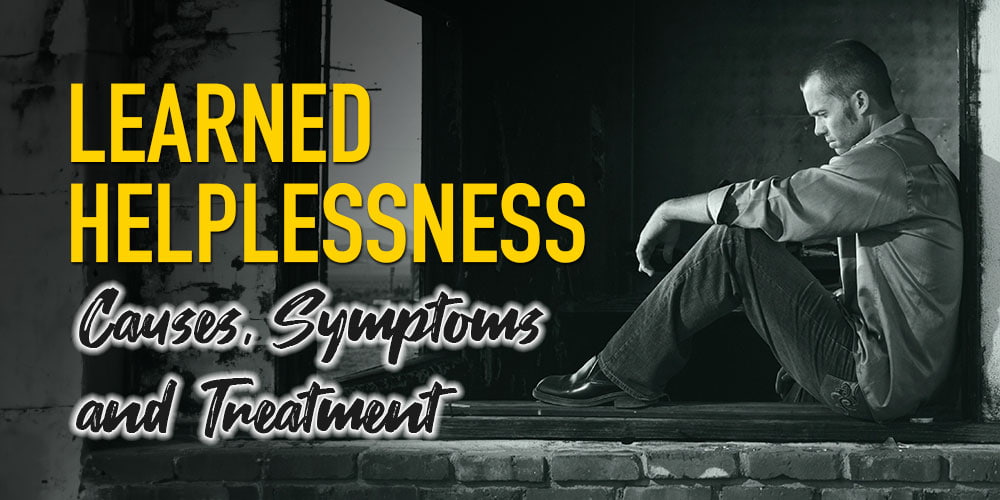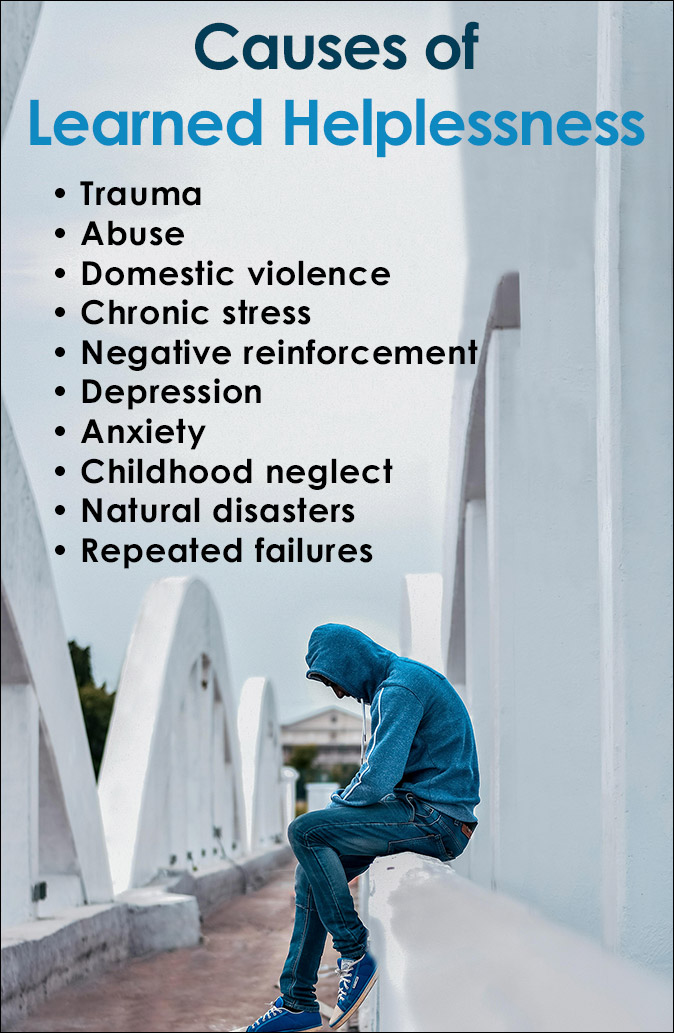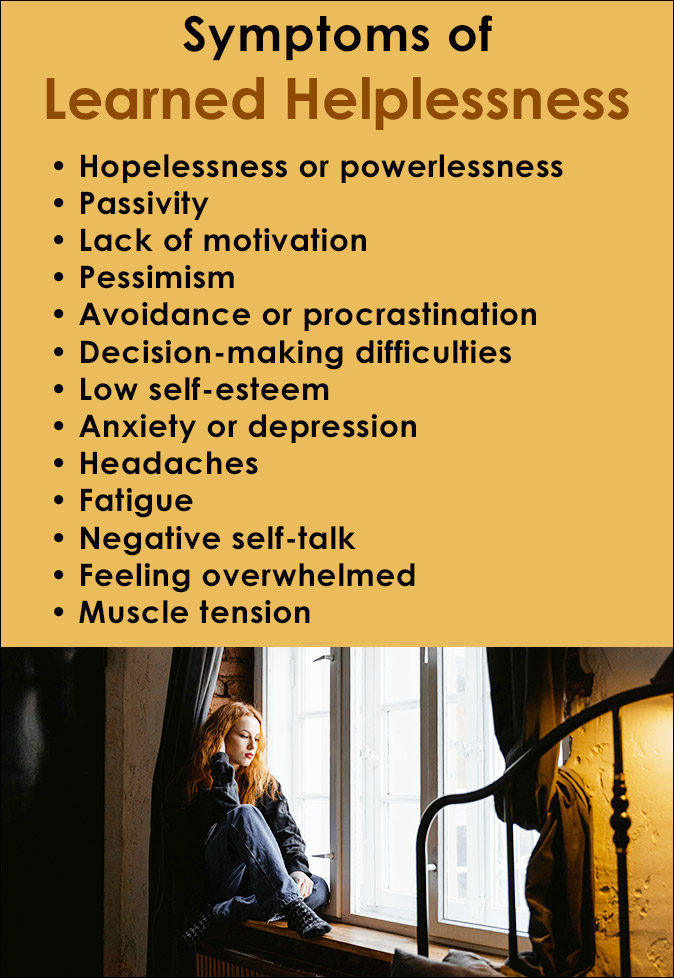
Learned helplessness is a condition that occurs when an individual feels helpless and unable to control or change a difficult situation even when a solution is available.
It often arises after experiencing a traumatic event or a series of repeated events, like being abused as a child.
This causes a person to believe that no matter what they do to overcome the issue, nothing will change, and they become stuck in a state of helplessness.
When an individual feels powerless, they instinctively learn to shut down as a coping mechanism.
It’s necessary to understand the causes and symptoms of learned helplessness to identify the most effective treatment methods to regain a sense of control over stressful events.
What is Learned Helplessness?
Learned helplessness is a state of mind that causes an individual to believe they have no control over situations or events that happen in their life, even though they actually have the power to change their circumstances.
This belief is often caused by repeated exposure to stressful or traumatic events that are perceived as inescapable or unchangeable.
Instead of taking the natural action to fight or flee, people will freeze or become immobilized because they have repeatedly learned to feel helpless.
Learned helplessness was first discovered by psychologist Martin Seligman through his experiments with dogs in the 1960s.
The experiments found that dogs who were repeatedly exposed to electric shocks eventually stopped trying to escape to avoid the shocks, even when they had an opportunity to do so.
Human studies found that learned helplessness can have a powerful impact on mental health, motivation, and overall well-being.
When an individual is threatened or scared, they can become angry, defiant, compliant, or shut down to avoid confronting the issue.
People struggling with the condition often feel powerless, pessimistic, and unmotivated, which can lead to depression, anxiety, and other mental health conditions.
Learned helplessness is not classified as a mental health condition in the DSM-5, although it is considered a disorder that can enhance or promote other mental health conditions such as anxiety, depression, certain phobias, and different types of PTSD.
The feelings of being helpless can lead to decreased motivation and self-esteem, a lack of control, procrastination, and an increased sense of being overwhelmed and depressed.
It’s possible to overcome the feelings of helplessness and improve mental health and restore a positive outlook on life with therapy, mindfulness, and lifestyle changes.
It is important to recognize the symptoms and seek help when feelings of helplessness make it difficult to deal with many of life’s stressful challenges.
What is the Learned Helplessness Experiment?
The learned helplessness experiment by Martin Seligman and Steven Maier in the 1960s (Seligman & Maier, 1967) was a study that discovered the learned helplessness theory.
The experiment consisted of three groups of dogs placed in different settings.
One group served as the control group and those dogs were put in a harness and then released.
The dogs in the other two groups were placed in a harness and given electric shocks. One of the groups could stop the electric shock by pressing on a panel, while the other group had no control to stop the shocks.
Later, the dogs were placed in a shuttle box with a divider that was low enough for them to jump over to escape the shocks.
The dogs in the first two groups jumped over the divider each time they received a shock to escape.
But the dogs in the third group that had no way of stopping the shocks from the previous experiment believed they still had no way of stopping the new shocks, so they simply laid down and gave up trying.
They had learned to become helpless instead of trying to control or stop the shocks.
The learned helplessness experiment showed when dogs were faced with a stressful situation they could not control, they inherited a sense of powerlessness and didn’t try to change the outcome even when they had the ability to do so.
The experiment led to a better understanding of how humans learn to give up when faced with repeated challenges like trauma or abuse.
What Causes Learned Helplessness?
There are a number of circumstances that can cause learned helplessness.
These are often related to repeated events or chronic exposure to stressful situations, although it’s possible to occur after a single traumatic experience.

Common causes of learned helplessness include:
- Trauma
- Abuse
- Domestic violence
- Chronic stress
- Negative reinforcement
- Depression
- Anxiety
- Childhood neglect
- Natural disasters
- Repeated failures
Experiencing traumatic events, especially during childhood, can lead to feelings of powerlessness and a belief that an individual has no control over their current or future circumstances.
Childhood abuse or domestic violence can cause feelings of helplessness and a belief that it is impossible to escape or change the difficult situation. Children who are neglected may give up on the idea that their needs will be met.
Prolonged exposure to stressful situations, such as poverty or chronic illness can create a sense of hopelessness.
Feeling a lack of control with work or relationships and continuous criticism often reinforces the belief that a person’s actions will not be effective at improving the situation.
Certain mental health disorders, such as depression, anxiety, or PTSD may contribute to learned helplessness. It can also have a negative effect on how people deal with these conditions.
It’s important to understand that learned helplessness is not a personal failure or weakness, but rather a psychological response to stressful experiences.
Learned Helplessness Symptoms
The symptoms of learned helplessness can vary in severity for each person and affect emotional well-being and behavior.
The biggest impact is often on motivation and decision-making although it contributes to many facets of a person’s mental health.

Common symptoms include:
- Hopelessness or powerlessness
- Passivity
- Lack of motivation
- Pessimism
- Avoidance or procrastination
- Decision-making difficulties
- Low self-esteem
- Anxiety or depression
- Headaches
- Fatigue
- Negative self-talk
- Feeling overwhelmed
- Muscle tension
The memory of helplessness can be stored as physical tension in the head, back, and throughout the body.
A lack of motivation is fueled by the belief that no matter what a person tries to do it will not be successful or improve the outcome.
The fear of failure results in low self-esteem, procrastination, and avoiding situations or making decisions because any attempt is doomed to fail.
As learned helplessness takes hold on a person’s life, they may develop a pessimistic attitude and outlook about the future, so they resign to giving up quickly on difficult challenges.
Recognizing these symptoms is necessary for treating and overcoming learned helplessness.
Treatment for Learned Helplessness
Learned helplessness can be challenging to overcome, but there are treatment approaches that have shown to be effective.
Some treatment methods focus on dealing with negative thoughts and behaviors to restore optimism and a greater sense of control, while others are rooted in physical movement to motivate taking action.
Effective Treatment Methods
- Cognitive Behavioral Therapy (CBT)
- Exposure Therapy
- Social Support
- Medication
- Meditation and Mindfulness
- Yoga
- EMDR Therapy
- Neurofeedback
- Somatic Experiencing
Cognitive Behavioral Therapy (CBT) is form of psychotherapy that focuses on identifying and changing negative thoughts and behaviors associated with mental health issues, including learned helplessness. CBT can help individuals recognize they have control over their circumstances, and it develops successful coping strategies.
Exposure Therapy gradually exposes individuals to situations they perceive are beyond their control in a safe and supportive environment to regain a sense of agency.
Building a strong social support network of family, friends, and even a therapist can provide a much-needed safety net and encouragement that are necessary during the recovery process.
Medication isn’t intended to directly treat learned helplessness, although antidepressants and other medications can reduce the symptoms of anxiety or depression to improve mood and optimism that may be related to the symptoms.
Meditation and Mindfulness help individuals become more aware of their thoughts and emotions in the present moment instead of reliving stressful or traumatic events of the past that cause an individual to shut down when faced with adversity.
Yoga emphasizes the connection between the mind and body and encourages individuals to become attuned to their physical sensations and emotions. This develops self-awareness, self-esteem, motivation, resilience, and sense of empowerment that are all lacking with learned helplessness.
Mastering movement through yoga generates competence, which is the best defense against the helplessness associated with trauma.
Eye Movement Desensitization and Reprocessing Therapy (EMDR) is effective for treating trauma and complex PTSD. If learned helplessness is caused by traumatic experiences, EMDR can help individuals process and reframe the memories and negative beliefs associated with the trauma.
Learning successful coping strategies will reduce feeling overwhelmed and powerless when faced with difficult situations and replace helpless passivity with determined action to move forward again.
Neurofeedback helps with self-regulation and empowers individuals to have greater control of their emotions, attention, and stress response associated with anxiety, stress, and depression.
Somatic Experiencing is a therapeutic approach aimed at addressing and resolving symptoms of trauma and stress-related disorders that often contribute to learned helplessness.
It is a body-centered approach that helps ground an individual and regulate the autonomic nervous system to better tolerate a physical somatic response as well as distressing emotions and situations.
It’s important to remember that overcoming learned helplessness is a process that requires patience, perseverance, and a willingness to challenge negative thought patterns.
With proper support and a comprehensive treatment program that incorporates many of these treatment therapies, it is possible to regain a sense of control over the feelings of helplessness.
Related Posts
- Alcohol Dementia Causes, Symptoms and Treatment
Note: Alcohol Dementia goes by many names including, alcohol-related dementia, alcoholic dementia, and alcohol-induced dementia.…
- Complex PTSD Symptoms, Causes and CPTSD Treatment
Complex PTSD symptoms are closely related to those of post-traumatic stress disorder although there are…
- Histrionic Personality Disorder Symptoms, Causes, Treatment
The general public often misunderstands personality disorders. These are complex mental illnesses that might present…
